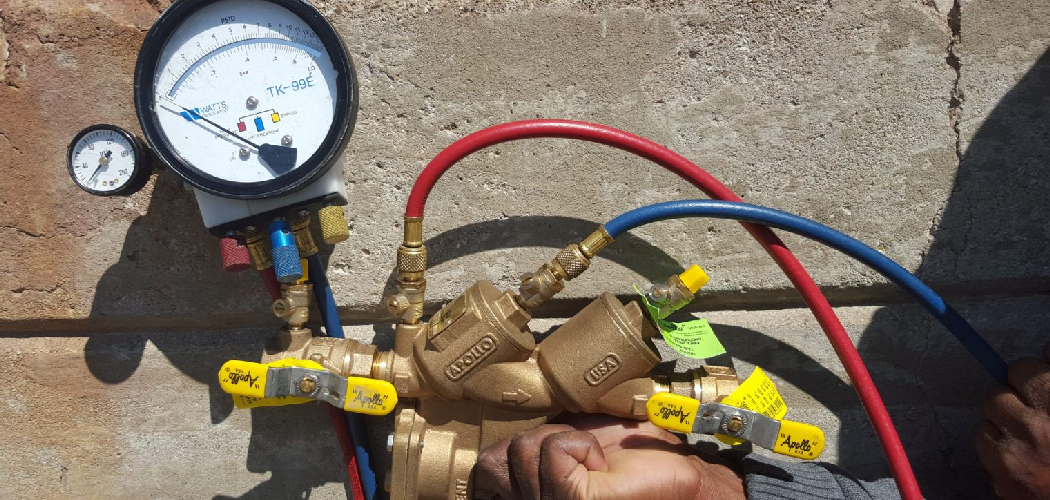Testing the pressure in a water line is an essential step to ensure the plumbing system operates effectively and safely. Proper pressure levels help prevent leaks, bursts, and damage to fixtures or appliances.
Whether you are troubleshooting a plumbing issue or performing routine maintenance, understanding how to test the water line pressure can save you time, money, and potential headaches. This guide will provide a clear and concise explanation of how to test pressure water line.
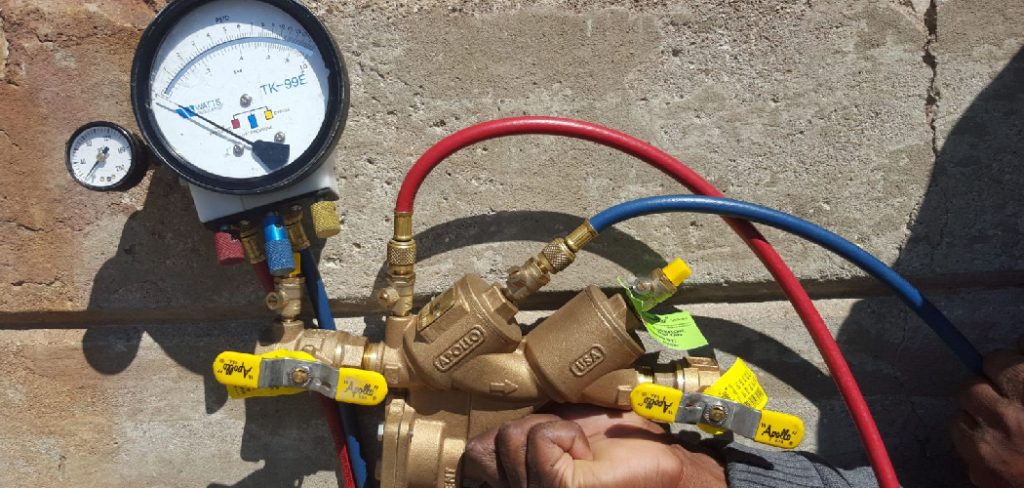
The Importance of Testing Water Line Pressure
Testing water line pressure is crucial for maintaining the integrity and efficiency of a plumbing system. Excessively high pressure can strain pipes, joints, and appliances, leading to leaks, bursts, and costly repairs. On the other hand, low pressure can result in poor water flow, impacting daily activities such as showering, washing dishes, or running appliances like washing machines and dishwashers.
Regularly monitoring pressure levels helps detect potential issues early, ensuring the longevity of the plumbing system and preventing inconvenient disruptions. Maintaining optimal water pressure also promotes water conservation by minimizing waste due to leaks or inefficiencies.
Tools Needed to Test Water Line Pressure
To accurately test water line pressure, a few essential tools are required. The most common tool is a water pressure gauge, which can be easily attached to an outdoor faucet or hose bib. This gauge measures the pressure in pounds per square inch (PSI) and provides a clear reading of the system’s current pressure.
Additionally, pipe thread seal tape, commonly referred to as plumber’s tape, may be used to ensure a secure and leak-free connection between the gauge and the faucet. For systems that require more comprehensive assessments, advanced digital pressure gauges or flow meters may be considered. Having these tools on hand ensures reliable and precise measurements, allowing you to effectively monitor and maintain your plumbing system.
10 Methods How to Test Pressure Water Line
1. Use a Pressure Gauge to Measure Water Pressure
The most straightforward method to test the pressure of your water line is to use a pressure gauge. This device is widely available at hardware stores and is typically designed to fit on a standard hose bib or faucet. To begin, locate an outdoor hose bib or any faucet with a threaded nozzle near your water main.
Attach the pressure gauge to the faucet, ensuring it is securely fastened. Once in place, turn on the water to its full flow. The gauge will immediately give you a reading, usually displayed in pounds per square inch (psi). A typical residential water pressure should fall between 40 to 60 psi. If the reading is too high or too low, it indicates a potential issue with your water pressure.
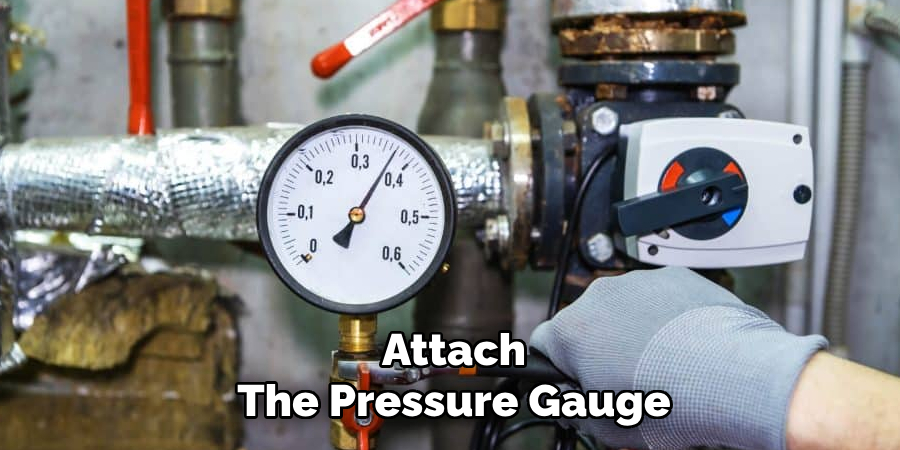
2. Check Water Pressure at Multiple Faucets
Water pressure can vary between different areas of your home, so it’s a good idea to test the pressure at multiple faucets. By checking several faucets, including ones in the kitchen, bathroom, and laundry area, you can identify any specific areas where the pressure might be lower than usual.
Attach the pressure gauge to each faucet and compare the readings. A consistent reading across all faucets suggests normal water pressure, while a significant drop in pressure at one location could indicate an issue with that particular line, such as a clog, a pipe issue, or a valve problem.
3. Measure Pressure Using the Water Meter
Another method to test water pressure is by checking the water meter, which is often located in your basement or outside near your property line. Turn off all water-using appliances and fixtures in your home to ensure no water is being used. Next, locate the water meter and check the reading.
Then, quickly open a faucet and note the change in the meter’s reading. If the meter shows a significant change in water flow, it may indicate low water pressure in your system. While this method doesn’t give you a precise psi reading, it can still help you determine if there is a problem with your water pressure.
4. Use a Pressure Reducing Valve (PRV) Tester
For homes with a pressure-reducing valve (PRV) installed—commonly found in areas with high water pressure—using a PRV tester is an excellent way to measure your water pressure accurately. A PRV tester is similar to a standard pressure gauge but designed to work in conjunction with the valve.
Attach the tester to the water line downstream of the PRV, turn on the water supply, and check the reading. If the pressure reading is outside the optimal range of 50 to 70 psi, it may indicate a malfunctioning PRV, which will need to be adjusted or replaced.
5. Inspect the Pressure Regulator for Issues
If your home has a pressure regulator installed (commonly in areas with high municipal water pressure), testing the pressure alone may not give you the full picture. It’s important to inspect the regulator for any issues, as a faulty pressure regulator can cause water pressure fluctuations or damage to your pipes.
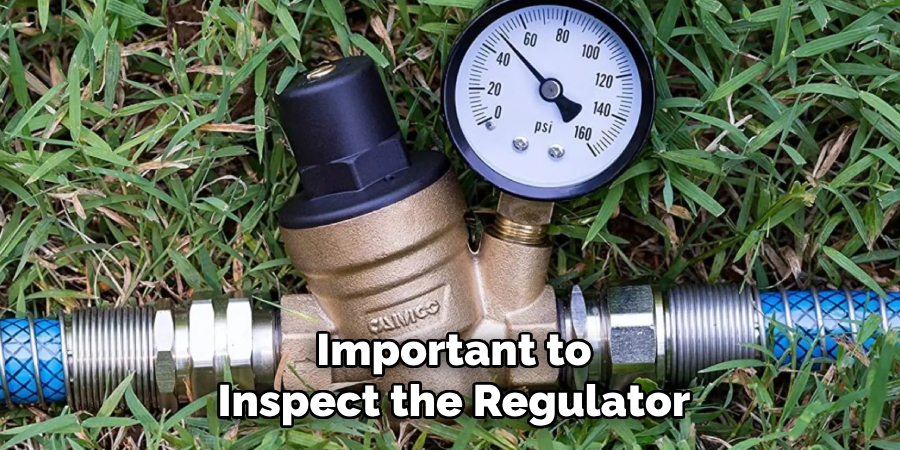
To check, locate the regulator (usually near where the water line enters your home) and ensure it is properly adjusted. If the regulator shows signs of wear, rust, or damage, it may need to be replaced to restore proper water pressure regulation.
6. Use a Digital Pressure Gauge for Accuracy
For those who prefer a more precise reading, a digital pressure gauge offers a modern alternative to mechanical gauges. These gauges are easy to use and provide an accurate digital display of water pressure. Attach the digital gauge to an outdoor hose bib or faucet, turn the water on, and the gauge will display the psi. Some digital models can store multiple readings and give you a more detailed understanding of fluctuations in your water pressure over time. Digital pressure gauges are ideal for homeowners who need frequent pressure tests for monitoring system health.
7. Test Pressure During Peak Usage Times
Water pressure can fluctuate based on the time of day or the amount of water usage in your home. To get a more comprehensive view of your water pressure, test it during peak usage times, such as during the morning when people are using the shower or kitchen, or in the evening when multiple appliances might be running simultaneously.
This will help you determine how the water pressure behaves under load. If the pressure significantly drops during peak usage, it may indicate issues with your water supply, such as an undersized pipe or a blockage.
8. Install a Pressure Gauge for Continuous Monitoring
For ongoing monitoring of your water pressure, consider installing a permanent pressure gauge on your main water line. This type of setup is especially useful if you live in an area with inconsistent water pressure or if you are dealing with frequent water pressure issues.
Permanent gauges can be installed by a plumber or as part of a larger plumbing upgrade. Once installed, the gauge will provide real-time readings of your water pressure, which can be monitored periodically or via an app if integrated with smart technology.

9. Perform a Flow Rate Test to Gauge Pressure Health
In addition to measuring static water pressure, it’s also valuable to assess the flow rate of your water system. To do this, fill a known volume container (such as a 5-gallon bucket) from an outdoor faucet and time how long it takes to fill the container. A healthy water pressure system should be able to fill the bucket quickly, usually in under a minute. If it takes significantly longer, it could indicate a drop in water pressure, a clog, or an issue with your water supply line.
10. Consult a Professional Plumber for Troubleshooting
If you’ve tested your water pressure using the methods above and are still experiencing issues, it may be time to consult a professional plumber. A licensed plumber can conduct a thorough inspection of your entire plumbing system, including the water supply lines, pressure regulators, and shutoff valves.
They can also identify potential leaks, pipe damage, or issues with the municipal water supply that may be affecting your water pressure. A professional will have the expertise and equipment to resolve the problem, ensuring your water pressure is restored to safe levels.
Things to Consider When Hiring a Plumber
When hiring a plumber to address water pressure issues or other plumbing problems, there are several key factors to keep in mind. First, ensure the plumber is licensed, insured, and certified to operate in your area. This guarantees that they meet professional standards and reduces the risk of liability.
Additionally, check reviews and ask for references to verify the quality of their work and customer service. It’s also important to get a detailed estimate upfront, including labor, materials, and any potential additional costs. Finally, confirm their availability and response times, especially if you’re dealing with an urgent issue. By carefully considering these aspects, you can find a trustworthy plumber to efficiently resolve your plumbing concerns.
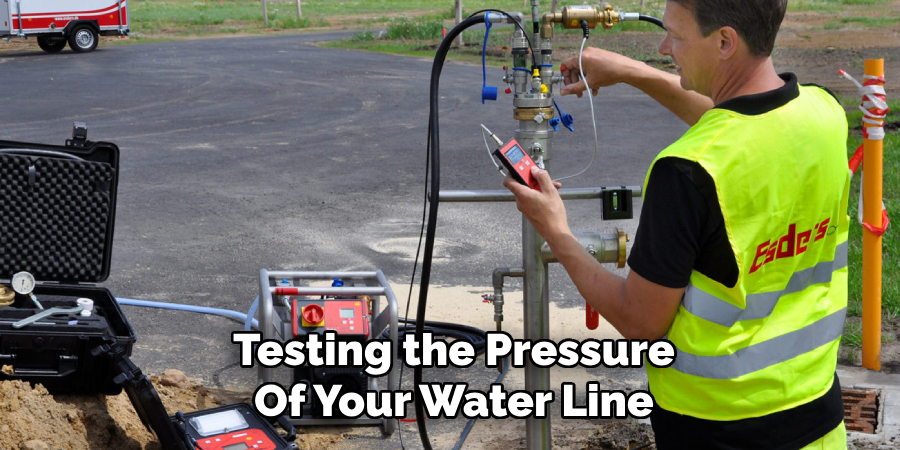
Conclusion
Testing the pressure of your water line is a simple yet essential task for every homeowner. Whether you use a pressure gauge, monitor your water meter, or inspect your pressure regulator, understanding your water pressure allows you to address any issues before they escalate.
By regularly testing your water line’s pressure and following the methods outlined above, you’ll ensure that your home’s plumbing system runs smoothly, water efficiency is optimized, and costly repairs are avoided. So, there you have it – a quick and easy guide on how to test pressure water line.

